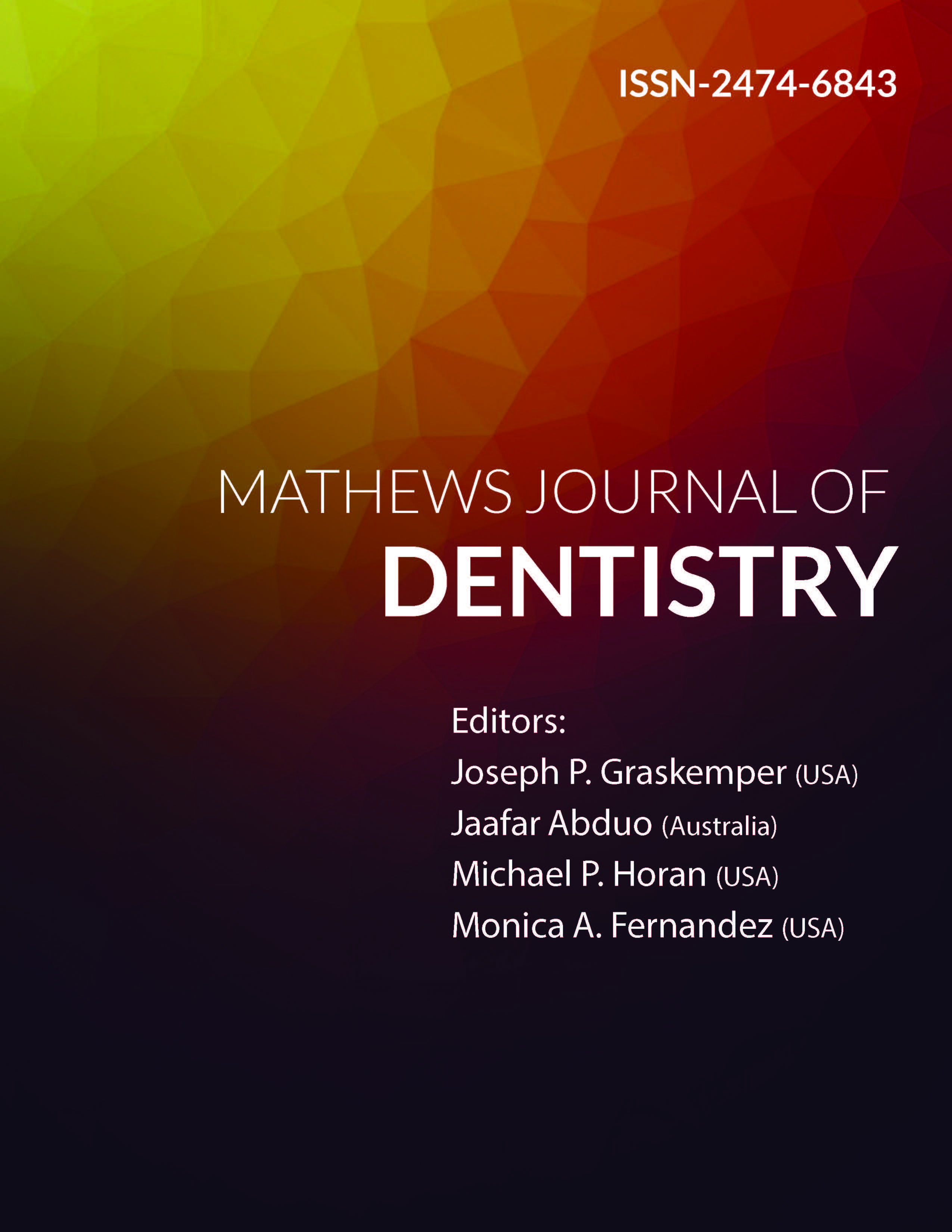
Information Links
Previous Issues Volume 1, Issue 2 - 2016
Bond Degradation Resistance and Interface Characterization of a Water-Expandable Endodontic Obturation Point
Nermine Hassan1, Alaa Diab2, Geraldine Ahmed3
1Resident Endodontics Department, Faculty of Oral and Dental Medicine, Cairo University, Egypt.
2Professor of Endodontics, Faculty of Oral and Dental Medicine, Cairo University, Egypt.
3Assistant Professor of Endodontics, Faculty of Oral and Dental Medicine, Cairo University, Egypt.
Corresponding Author: Nermine Hassan. Resident Endodontics Department, Faculty of Oral and Dental Medicine, Cairo University, Egypt, Tel: 0020106557670; Email: [email protected]
Received Date: 01 Oct 2016
Accepted Date: 25 Oct 2016
Published Date: 31 Oct 2016
Copyright © 2016 Hassan N
Citation: Hassan N, Diab A and Ahmed G. (2016). Bond Degradation Resistance and Interface Characterization of a WaterExpandable Endodontic Obturation Point. Mathews J Dentistry. 1(2): 011.
ABSTRACT
Aim: To evaluate the effect of different aging periods on the bond degradation resistance of the water-expandable endodontic obturation points/dentin interface.
Materials and Methods: Sixty freshly extracted human upper central incisors teeth were instrumented using a set of proTaper rotary instruments to achieve a size # 40 apical preparation. Irrigation was performed. The specimens were divided into two main equal groups of 30 roots each according to testing material. Each group was further divided into three subgroups according to aging period of 10 teeth each. Each subgroup was divided into three classes according to the root segment tested into coronal, middle, and apical segments. Single cone technique was used for both tested materials. The root canals were filled with C-Point ProTaper F4/Endosequence BC sealer and Protaper Universal Gutta Percha Points F4/AH-Plus sealer. After the storage period designated for each group, the samples were sectioned perpendicular to the longitudinal axis of each root into a series of 1.0 mm thick cross-sectional slices. Each root slice was tested for micro push-out bond strength. Interfacial analysis was done using Environmental Scanning Electron Microscopic. Results were tabulated and statistically analyzed using One-way ANOVA test followed by Tukey`s post hoc test for multiple comparison.
Results: At 4 hours and one month aging period there was a significant difference between the tested materials where the C-Point showed higher mean values.
Conclusions: The bonding quality during the initial setting period of C-Point/Endosequence obturating system was not affected and didn't deteriorate with aging; however C-Point/Endosequence obturating system performed better than GuttaPercha/AH-Plus.
KEYWORDS
C-Points; Endosequence Bc Sealer; Gutta Percha Points; Ah-Plus Sealer; Micro Push-Out Bond Strength Test.